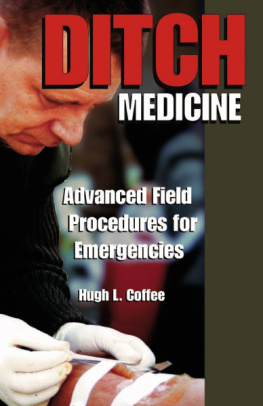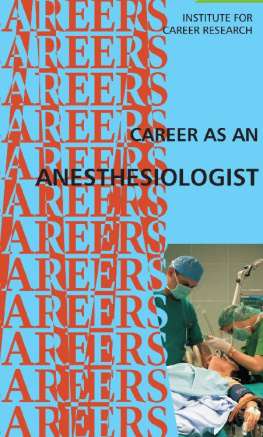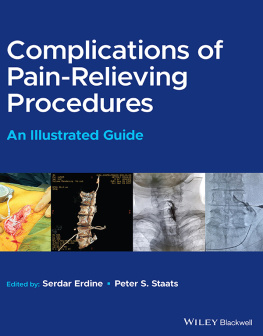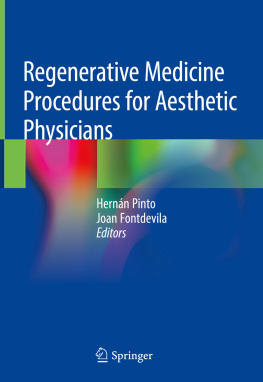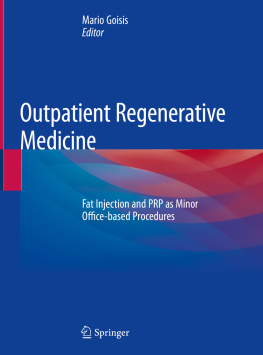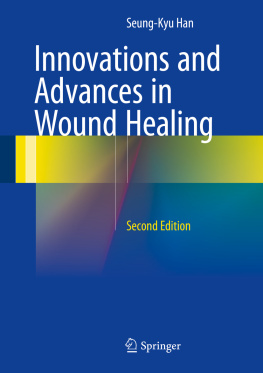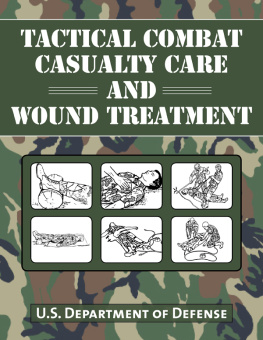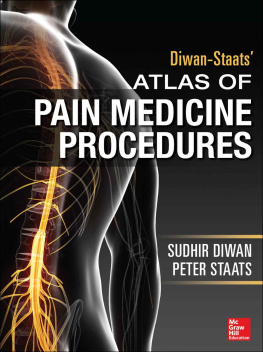The techniques and procedures in this book are only to be administered by certified medical professionals. This book is not meant to be a substitute for proper and thorough education and training in the fields of medicine and emergency first aid.
The author, publisher, and distributors of this book disclaim any liability from any damages or injuries of any type that a reader or user of information contained in this book may encounter from the use or misuse of said information.
ACKNOWLEDGMENTS
The following medical professionals were of tremendous assistance, as the expertise represented by their various specialties contributed to the technical accuracy of the text.
Rose Akers, R.N. MSN
Steve Barnes, M.D.Piedmont Orthopaedic Complex,Macon, Georgia
A. Scott Coffee, Pharm.D.
Glenn Dorner
Konrad Hell, Prof. Dr. Med.Basel, Switzerland
Richard A. Knutson, M.D.Delta Medical Center,Greenville, Mississippi
A.A. McMurray, Sr., M.D.
The photographs used in this book were contributed by the following individuals. Their photographs were indispensable, as they bring about a greater understanding of the narrative.
Rose Akers, R.N. MSN
C.V. AllmarkTribal Refugee Welfare in Southeast Asia, Mirrabooka Western Australia
James Byron Dawson, M.D.Deputy Director of the Division of Forensic Science/The Georgia Bureau of Investigation
Glenn Dorner
Shirley B. FordhamChief Forensic Photographer of the Division of Forensic Science/The Georgia Bureau of Investigation
Gerald T. Gowitt, M.D.Chief Medical Examiner for Hall and Henry Counties, Georgia
Richard A. Knutson, M.D.Delta Medical Center, Greenville, Mississippi
D.E. Rossey
Ronnie StuartCoroner, Henry County, Georgia
Hugh WoodAustralia
The gifted hands of Gary Elliott and Denise Chung produced artwork for this book when available photographs would have failed to give the reader a complete understanding of a topic.
Lynn Fulop and Kathy Shumans methodical and professional arrangement of sentence format allowed the manu script to move from subject to subject in a clear, concise manner.
Scott Coffee (library research), John Cannon (subject of many staged photographs), Karen Coffee (photographer), Mike Mitchell (photographer and photographic development), Gary Elliott (artwork), and D.E. Rossey (military historian) deserve special acknowledgment for their enthusiastic and steadfast commitment to this project.
INTRODUCTION
From the days of the Roman Legionnaire with his short sword and pilum to the modern-day infantryman with his assault rifle and grenades, mans ability to tear the flesh and break the bones of his opponent has increased to new levels of grisly efficiency. Fortunately, for the soldier whose luck has run out and in the blink of an eye has been transformed from a combatant to a casualty, pre-hospital care of the injured has improved tremendously. Gone are the backward days when the field surgeon had more in common with an alchemist, protecting his scientific secrets of patient care from those who sought to understand the appropriateness of treating a gunshot wound with egg yolk, rose oil, and turpentine.
Along with technical advances in emergency medicine, patient care has entered new realms of delivery with the medical communitys growing acceptance of medical paraprofessionals. Without these paraprofessionals at the scene to initiate advanced emergency medical procedures, many of the newest procedures in emergency medicine would be limited in their effectiveness because patient transport time would spoil their effects.
Modern weapons of war are found in the hands of combatants in the most remote regions. However, as a rule, modern military medicine, with its mobile hospitals and rapid patient evacuation to definitive health care, fails to follow combatants into the fields of conflict. It is in just such a scenariowhere physicians are not to be found, patient transport to a hospital is measured in days instead of minutes, resources are limited, and the environment is hostile that the Pre-Hospital Care Provider (PHCP) is in his element.
The subject matter in this book covers advanced medical procedures set in a field setting. Should the PHCP find himself on an isolated battlefield or in the middle of some form of civil disaster, his ability to employ the procedures covered in this book in a timely and competent manner will have a positive impact upon his patients.
For the wounded soldier who sees his strength ebbing into the warm pool of liquid by his side and seeks relief from his pain by crushing the blades of grass in his hands, thoughts are of family never to be seen again and aid from whatever quarter he can find it. Ditch medicinethe difference between life and deathoften starts with the thud of a pair of boots landing beside the soldier and a PHCP simply grasping his patients hand and peering into his ashen face.
CHAPTER 1
SMALL WOUND
REPAIR
For the Pre-Hospital Care Provider (PHCP), mastery of small wound repair techniques is of reat importance in a field setting. From the laceration caused by an ax while chopping wood to an avulsion caused by an exploding mine, the ability to clean and close a wound properly can ensure quicker recovery of the patient with fewer associated complications. The traumatized site, if not treated early, can quickly develop into a life-endangering infection. Cosmetic distortion and reduced usage of the wound site can result from an open wound where tissues are left to heal with no proper surgical intervention (). The PHCP can cause all three of these debilitating patient conditions to occur as a result of poor surgical practice.

